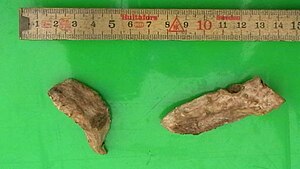[amazon_link asins=’B01N6F2CEX,B01JYGEUH4,B01CFJAF12,B00MJ2C32K,B01IMJVLD0,B06XZYCYNZ,B01L784QOE,B01JYE8IHY,B00VJZL1O4′ template=’ProductCarousel’ store=’finmeacur-20′ marketplace=’US’ link_id=’06582b75-320b-11e7-ac64-0725eecc2a2e’]
Botanical Name : Conopodium majus
Family: Apiaceae
Genus: Conopodium
Species: C. majus
Kingdom: Plantae
Division: Magnoliophyta
Order: Apiales
Synonyms: Bunium flexuosum – Stokes, Conopodium denudatum – Koch.
Common Name ;Pignut, Hognut, and more indirectly Saint Anthony’s nut
Habitat ;Conopodium majus is native to Europe, including Britain, from Norway to Spain, east to Italy and Corsica. It grows in Woods, hedgerows and fields. It is never found on alkaline soils
Description:
Conopodium majus is a small herbaceous perennial common in woods, grasslands, and hedgerows across Europe. It flowers from May to June producing white flowers in compound umbels and has finely divided leaves.It has a smooth, slender, curving stem, up to 1 m high, much-divided leaves, and small, white flowers in many-rayed terminal compound umbels.
The stem terminates in a single tuber up to 20cm below ground with thin fibrous roots growing across its surface (Hather 1993). This storage organ is edible with a nutty flavour similar to chestnut and available all year round.
CLICK TO SEE THE PICTURE…...(01)....(1).…..(2)……..(3)..…....
It is hardy to zone 0 and is not frost tender. It is in flower from May to June, and the seeds ripen from July to August. The flowers are hermaphrodite (have both male and female organs) and are pollinated by Insects. The plant is self-fertile.
The rounded “nut” (inconsistently described by authorities as a tuber, corm, or root) is similar to a chestnut in its brown colour and its size (up to 25 mm in diameter), and its sweet, aromatic flavour has been compared to that of the chestnut, hazelnut, sweet potato, and Brazil nut. Palatable and nutritious, its eating qualities are widely praised, and it is popular among wild food foragers, but it remains a minor crop, due in part to its low yields and difficulty of harvest.
Cultivation:
Never found on alkaline soils in the wild. See the plants native habitat for other ideas on its cultivation needs. This species responds to cultivation by producing larger tubers. With careful selective breeding it is probably possible to produce a much more productive plant.
Propagation:
Seed – sow spring in a cold frame. Germination is usually quick and good. Prick out the seedlings into individual pots as soon as they are large enough to handle and plant them out when in early summer. It is also possible to sow in situ, though this requires a lot more seed to produce the same amount of plants from a protected sowing. Division in late summer as the plant dies down.
Edible Uses:
Edible Parts: Root.
Tubers – raw or cooked. A very pleasant food with a flavour somewhat between a sweet potato and hazelnuts, with a hot aftertaste of radish. We have never detected this hot aftertaste, and feel that the flavour is reminiscent of brazil nuts. There is only one tuber on each plant, this is rather small and difficult to harvest, but the size could probably be increased by cultivation.
Medicinal Uses
The powdered roots have been recommended as a cough remedy.
Disclaimer : The information presented herein is intended for educational purposes only. Individual results may vary, and before using any supplement, it is always advisable to consult with your own health care provider
Resources:
http://en.wikipedia.org/wiki/Conopodium_majus
http://digedibles.com/database/plants.php?Conopodium+majus
http://www.herbnet.com/Herb%20Uses_OPQ.htm




































